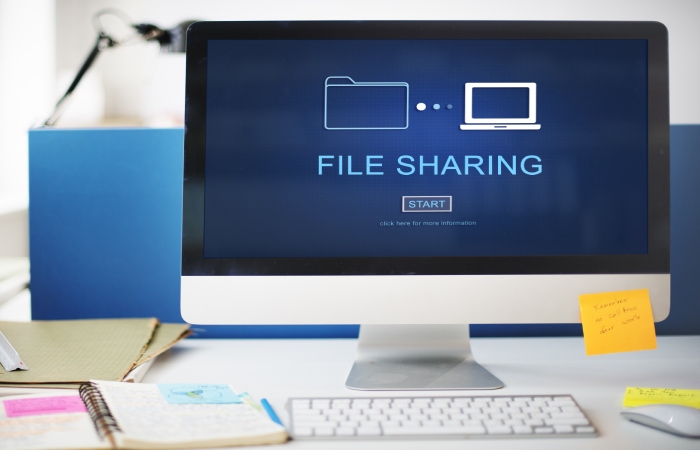Server Security Practices For Your Business File Sharing – Cyber attackers these days have become highly sophisticated that it seems they can hack into anything. In order to break into sensitive personal and financial data, these hackers look at security weaknesses across all fronts—including servers.
All users need servers in order to receive, transfer, and share files. Businesses and organizations need servers in order to carry out their operations with better efficiency. With this highly crucial function, servers need to be protected and secure from cyberattacks. You can perform the following server security practices to minimize risks.

Table of Contents
What Is A Server And What Does It Do?
By definition, servers refer to either a software or hardware tool that processes requests made over a network from a client. Online, a ‘server’ describes a computer system that receives requests for web files and sends these files to the requester.
Hackers can get into the servers and have access to these files, making information sharing a risky endeavor, if done without a secure server. File access and sharing are both necessary for business communication and collaboration. Unfortunately, using work computers and other office-assigned devices is never enough to ensure a safe file exchange.
Here are the things you can do to have peace of mind.
1. Have A Secure File Transfer Protocol
To ensure that your files are securely transferred and delivered exclusively to your chosen recipient(s), make sure it utilizes end-to-end encryption. This means only the file sender and receiver possess the keys to decode data. Ideally, no one else can decrypt the files, making it useless to hackers if they can get through the said data.
A File Transfer Protocol Secure (FTPS) such as the one being used by this site; https://www.goanywhere.com/managed-file-transfer/file-server/ftp-server encrypts data files as well as authentication information. Secure file servers protect the files while being transferred from or to your end.
2. Establish A Secure Connection Using SSH Protocol
A protected communication channel must be established to have secure information exchange. One of the best ways to achieve this is to use a Secure Shell (SSH) Protocol, which encrypts all data transmitted in the file exchange.
As an added layer of security, there are few tweaks that need to be done such as changing the port settings and other configurations. Additionally, an SSH server may be authenticated using hard to crack keys.
3. Manage File Access Efficiently by Disabling Root Log In
Open communication in the workplace is important. But you have to regulate who can access sensitive files by disabling SSH root login. The root user has the most access, so hackers try to break in by finding out the password for the said type of user. Disabling root log in means reducing the chances of your server being hacked into.
For secure file exchange, you can create limited user accounts instead of a root user account. Doing so will limit your access but you can work around the limited administrative controls using specific commands. In addition, you can still use the latter when the need arises.
4. Consider Private Networks and VPNs
Private networks and virtual private networks (VPN) facilitate a more secure file exchange by encrypting internet data and user identity, making it more challenging for persons with malicious intent to get through and access your online information.
When a user is online, its the internet service provider (ISP) supplies the connection and keeps track of the user via an internet protocol (IP) address. All the information on internet activities is stored in the ISP server—which may be vulnerable to hacking and other forms of cyber-attacks.
5. Establish Stringent Password Requirements
All server users should be conscious of security, but you can help your staff by implementing strict password requirement policies. Have them create hard-to-guess and complex passwords, and multi-factor authentication log-ins, as necessary.
Encourage your staff to create unique passwords and set an expiration date for passwords so that they get changed often—which helps enhance server security.
6. Utilize Intrusion Detection Systems and Monitor Login Attempts
Secure your server better by frequently checking the processes and activities using an intrusion detection system (IDS). With this useful tool, you can monitor and keep tabs on any unauthorized activities in your server –including hacking attempts.
This software records all system processes, allowing an administrator to detect potentially hazardous attempts at hacking into your system. As hacking involves trial-and-error to successfully gain access to your server, intrusion detection software blocks multiple attempts from an IP address. An IDS can be activated manually or automatically, by changing the settings and schedules.
Wrapping Up
Using the latest online security products and fostering a culture of cybersecurity go hand in hand in establishing a secure information exchange. With these steps aimed at enhancing server security, users can access and share files safer and easier contributing to better productivity.
Besides focusing on server security, storing encrypted back-ups is an equally important measure for organizations to undertake. This ensures that businesses can access critical files in case of need.


